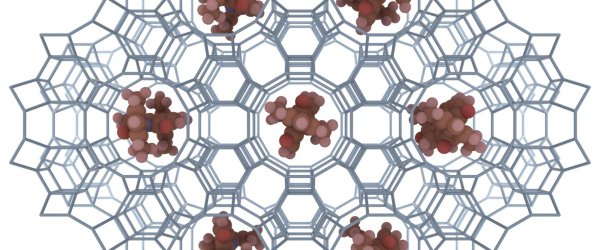Category: Conference
-

DNA sensor detects cervical, bladder, kidney cancer
University of Twente MESA+ professor Wilfred van der Wiel is developing an electrode to detect cervical, bladder and kidney cancer in DNA. NanoGap is a 100 nanometer wide gap in a metal electrode with receptors that provide notifications when urine DNA is degraded. Hypermethylated DNA is bound to the receptors. By covering the DNA with metal particles, a live…
-

Google Fit platform aggregates health data
Using a single set of APIs, Google Fit collects and aggregates data from fitness apps and sensors to manage a user’s fitness stream. The platform will work with wearables and other peripherals. To protect privacy, permission is required and data can be deleted. Initally, Adidas, Nike , Intel, LG and Motorola will participate. Nike will add…
-
Baby onesie tracks breathing, sleep, movement, temperature
http://mimobaby.com/ Sensor based baby monitoring is receiving a lot of exposure at CES. One such monitor, by Mimo baby, includes three parts: the Kimono, the Turtle and the Lilypad station. The Kimono is a cotton onesie, with machine washable sensors, worn by a baby when sleeping. It houses the Turtle, which tracks a baby’s respiration,…
-
Digital Health. Wearable Tech. Quantified Self. Curated.
Wearable tech. Digital health. Quantified self. mHealth. Connected home. Internet of things. However described, the phenomenon of using sensor technology to monitor, adapt, diagnose, gamify, and improve our health is in full swing at the Consumer Electronics Show. As sensors become better and cheaper, signal processing becomes more sophisticated, and mobile technology becomes ubiquitous, the revolution…
-
“Nanosponge vaccine” induces immune response to fight MRSA toxins
http://www.utsandiego.com/news/2013/Dec/01/vaccine-nanoparticles-ucsd-efficient/ UCSD professor Liangfang Zhang has developed a “nanosponge vaccine” which has enabled the immune systems of mice to block the adverse effects of the alpha-haemolysin toxin from MRSA—both within the bloodstream and on the skin. The nanosponges in the “toxoid vaccine” platform are bio-compatible particles made of a polymer core wrapped in a red-blood-cell membrane. Each…
-

Stem cells converted to functional lung cells; could impact modeling, drug screening, transplantation
http://www.nature.com/nbt/journal/vaop/ncurrent/full/nbt.2754.html Columbia professor Hans-Willem Snoeck and colleagues have transformed human stem cells into functional lung and airway cells. This has significant potential for modeling lung disease, screening drugs, studying human lung development, and, ultimately, generating lung tissue for transplantation. The research builds on Dr. Snoeck’s 2011 discovery of a set of chemical factors that can turn human embryonic…
-
“Passive sensor” home health monitoring platform launches
http://www.irc-sphere.ac.uk/ The Universities of Bristol, Southhampton and Reading have launched their long anticipated continuous monitoring Sensor Platform for Healthcare in a Residential Environment (SPHERE). The system will detect overnight or mini-strokes by noticing small changes in behavior or expression. It can be used to identify the early stages of heart disease, dementia, diabetes, depression and…
-
Orthopedic surgeons “draw” regenerating bone material on body with “BioPen” prototype
http://media.uow.edu.au/news/UOW162803 Researchers from the Australian Research Council Centre of Excellence for Electromaterials Science at the University of Wollongong unveiled a prototype of an orthopedic surgery aid they call “BioPen”. They claim that it enables customized implants to be created at the time of surgery, eliminating the need to harvest cartilage and grow it for weeks in…
-
Noninvasive nanoparticle diagnostic detects blood clots early
http://pubs.acs.org/doi/full/10.1021/nn403550c Current blood clot tests are very indirect. MIT’s Sangeeta Bhatia has developed a diagnostic based on technology first reported to detect colorectal cancer. The system consists of iron oxide nanoparticles, FDA approved for human use, coated with specialized peptides that interact with thrombin. After being injected into mice, the nanoparticles travel throughout the body. When the particles…
-
Real-time detector for intravenously delivered drugs
http://phys.org/news/2013-09-real-time-detector-iv-drugs-life-threatening.html A University of Illinois developed optical device can identify fluid in an IV line in real-time, improving the safety of delivery. Professor Brian T. Cunningham and his team used Surface-Enhanced Raman Scattering (SERS) technology, a powerful analytical tool prized for its extreme sensitivity in obtaining molecular signals that can be used to identify chemicals.…
-
Collaborative robots work alongside humans
http://www.economist.com/news/technology-quarterly/21584455-robotics-new-breed-robots-being-designed-collaborate-humans The Economist’s Technology Quarterly describes several examples of “collaborative robots” with qualities that allow them to team with people in factories, at home, or in the classroom.
-
Data glasses controlled by eye movement — an alternative to brain machine interface
http://www.domain-b.com/technology/20130912_movements.html Researchers at the Fraunhofer Institute have developed bidirectional OLED microdisplay eye-controlled data glasses. Users can view the real world while browsing a large amount of virtual information and turn pages with their eyes. Integrated camera sensors register the direction of the wearer’s eye movements and an image processing program calculates the exact position of…